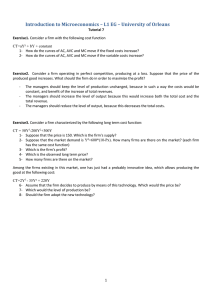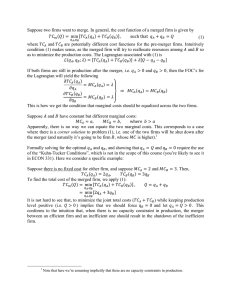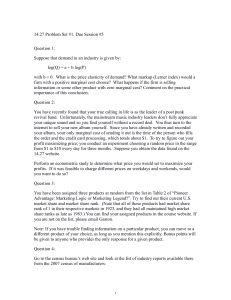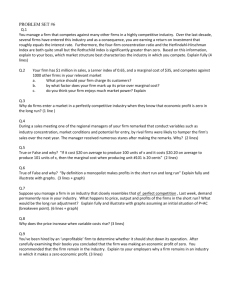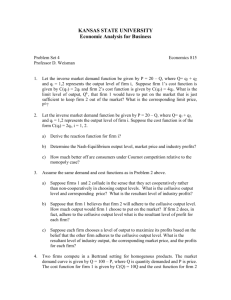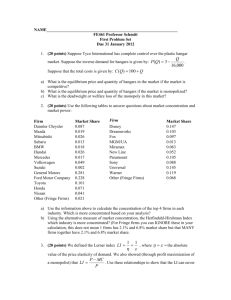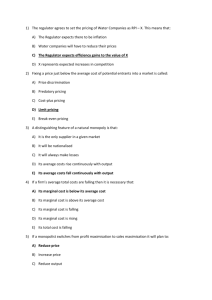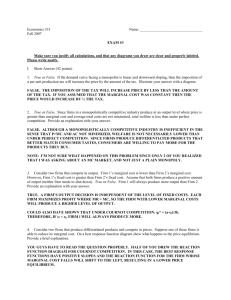Document
advertisement
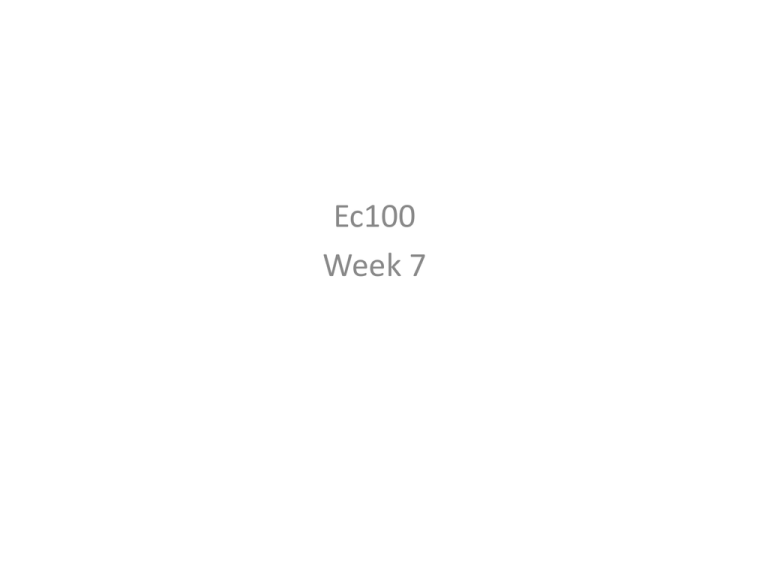
Ec100 Week 7 Question 1 If a firm produces 9 units its total costs are £52. If it produces a 10th unit, its total cost rises to £60. What is the average cost if the firm produces 10 units? 6 AC = TC/Y Question 2 If a firm produces 9 units its total costs are £52. If it produces a 10th unit, its total cost rises to £60. What is the marginal cost of the 10th unit? 8 MC = The extra cost associated with producing one more unit of output Question 3 If marginal costs are always below average costs, does the firm have? IRS • If MC<AC then AC must be falling. • If MC>AC then AC must be increasing. Question 3 • Here, MC<AC • So AC is falling as Y increases • This means total cost (=AC*Y) is increasing less quickly than Y • This implies IRS (from the definition in lecture) Falling AC means IRS Constant AC means CRS Increasing AC means DRS Question 4 A firm with decreasing returns to scale increases its output by 10%. What happens to total costs? They go up by more than 10% Straight from the definition in lecture. Question 5 Suppose I produce a magazine and sell it. Do you think I will have: Increasing Returns to Scale • • • • Probably costly to produce 1 magazine But producing the second is much cheaper… Specialization, fixed costs… AC is falling… Question 6 Suppose all in an industry firms have U-shaped average cost curves which have a minimum if the firms produce 10 units when the average cost is £15. What is the marginal cost if the firm produces 10 units? Exactly £15 • At minimum of AC, MC=AC. Why? • Again, think of footballer to draw the graph… Question 7 Suppose all firms have U-shaped average cost curves which have a minimum if the firms produce 10 units when the average cost is £15. If there is free entry into the industry, what will be the price in the market? Exactly £15 Price will be bid down to the minimum AC Question 8 Suppose all firms have U-shaped average cost curves which have a minimum if the firms produce 10 units when the average cost is £15. If, when the market clears, total demand is 120 units, how many firms will there be in the industry? 12 • Each firm produce 10 units • So number of firms = 120/10 = 12 Question 9 If a firm has increasing returns to scale and produces the level of output where marginal costs equal price. Tick all the answers that are true The firm is making losses but might make profits by increasing output • • • • IRS: MC<AC Here, P=MC<AC Profits = TR – TC = Y*P – Y*AC = Y(P-AC) Need price to be at least equal to AC to make profits • Because MC & AC are falling, at higher output price might be above AC (e.g. if a constant price, see graph) Question 10 A firm with decreasing returns to scale increases all its inputs by 10%. What happens to its output? Goes up by less than 10% • From definition given in the lecture • See “Economies of Scale Viewed Through the Production Function” slide
